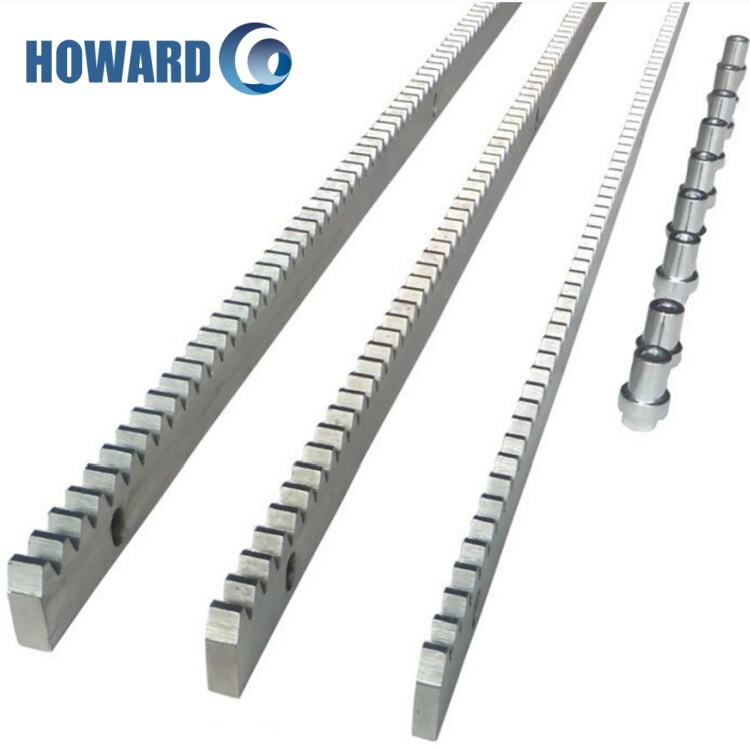Pallet Racks: The Cornerstone of Steel Rack Systems
Essential Features and Configurations
Pallet racks are fundamental components in optimizing warehouse space, offering diverse configurations that cater to different storage needs, including selective, drive-in, and pallet flow racks. These racks provide the flexibility to adjust shelving heights, which is crucial for accommodating products of various sizes and weights. By enabling such customization, pallet racks ensure efficient use of space and support the safe storage of assorted goods. Furthermore, safety features like load limits and impact protection systems are vital for regulatory compliance and the protection of warehouse employees. These features address the critical need for sturdiness in rack construction, especially when handling heavy loads, with standardized materials and construction methods to withstand substantial strain effectively.
Operational Benefits in Warehousing
The implementation of pallet racks in a warehouse significantly enhances operational efficiency by streamlining access to products and reducing retrieval times. They improve inventory management by providing clearer stock visibility, and technologies like RFID and barcoding further optimize tracking processes. This system also bolsters organizational structure within warehousing, fostering better workflow processes and reducing labor costs. Properly configured racking systems are integral to minimizing the risk of injuries and accidents, thus promoting a safer work environment for employees.
Industries That Rely on Pallet Racking
Pallet racking systems hold immense importance across various industries, including retail, manufacturing, and distribution, where maximizing space utilization is crucial. These systems are indispensable in the food and beverage industry, where health and safety regulations necessitate specialized racking solutions for storing perishable goods. E-commerce businesses also rely heavily on these systems to manage a vast array of SKUs, which enhances order fulfillment speed and efficiency. Furthermore, pharmaceutical companies leverage advanced racking systems to comply with stringent regulations concerning storage and inventory control.
Mezzanine Racks: Vertical Space Maximization
Structural Design and Safety Standards
Mezzanine racks are meticulously designed to make the most of vertical storage space, featuring multiple levels that can accommodate significant weight and complex operations. These structures adhere strictly to local building codes, incorporating safety barriers and detailed load-bearing calculations to guarantee stability. Essential safety regulations mandate the inclusion of features such as emergency exits, guard rails, and clear signage to protect workers in the area. Additionally, the selection of high-quality materials in the construction of mezzanine racks is crucial, as it ensures durability and the ability to withstand extensive wear and tear over time.
Multi-Level Storage Applications
Mezzanine racks offer innovative multi-level storage solutions, dramatically increasing available storage space without necessitating the expansion of floor areas. Particularly in distribution centers, these systems can optimize workflow by utilizing gravity-fed configurations for efficient stock rotation. This optimization is beneficial in manufacturing environments, where mezzanine racks can be used to support workstations above storage areas, thereby enhancing operational efficiency. The flexibility inherent to mezzanine rack design allows businesses to adjust their storage capabilities in line with evolving inventory demands, making them a versatile choice for dynamic storage needs.
Cantilever Steel Racks for Bulky Materials
Design Adaptability for Long Items
Cantilever racks are expertly designed for the storage of long and heavy items, such as pipes, lumber, and steel rods, making them indispensable in environments where these materials are used. The lack of a front post permits effortless loading and unloading from all sides, maximizing accessibility. Their adjustable arms cater to a wide array of item lengths and weights, rendering them exceptionally adaptable. Moreover, these racks can be customized to meet specific storage requirements, including tailored arm lengths and specific weight-bearing capabilities. This flexibility not only enhances operational efficiency but also allows for the optimization of storage space.
Durability in Heavy-Duty Environments
Cantilever racks are renowned for their robustness and are crafted from heavy-duty steel, ensuring exceptional durability and stability in demanding warehouse settings. Their construction allows them to endure harsh environmental conditions, making them ideal for outdoor storage and areas exposed to the elements. The application of quality finishes, such as powder coating, further extends the lifespan by preventing rust and corrosion. Studies on regular maintenance reveal that properly maintained racks can last for decades, offering a cost-effective solution to meet long-term storage demands while maintaining warehouse safety.
Use Cases in Construction and Logistics
In the construction industry, cantilever racks play a vital role in efficiently managing large quantities of materials on job sites, facilitating smooth operations. Similarly, logistics companies utilize these racks to organize inventory, offering swift access to materials and minimizing the time spent on retrieval. The storage flexibility of cantilever racks supports the dynamic nature of seasonal inventory changes, making them ideal for businesses facing fluctuating demand. Case studies have highlighted how businesses employing cantilever racks have experienced significant improvements in operational efficiency and reduced handling times, demonstrating their invaluable contribution to efficient material management.
High-Density Steel Rack Innovations
Drive-In Systems: Space-Efficient Bulk Storage
Drive-in racking systems revolutionize warehouse capacity by optimizing storage density. They allow multiple pallets to be stored in deep lanes, thus minimizing aisle space and maximizing usable storage area. This design significantly reduces handling time since forklifts can directly drive into the rack, promoting faster loading and unloading processes. Ideal for high-volume items with low SKU diversity, drive-in racks enhance storage density and reduce associated costs. Additionally, the integration of push-back mechanisms within these systems enhances inventory management, especially vital in the storage of perishable goods.
Push Back Racking: Dynamic Inventory Management
Push back racking systems serve as an innovative solution for dynamic inventory management. They enable operators to store multiple pallets of the same SKU within a single lane, fostering efficient storage processes. These systems accommodate FIFO (First In, First Out) and LIFO (Last In, First Out) methodologies, making them versatile for various product types. Businesses that adopt push-back systems experience improved turnover rates and enhanced inventory tracking, boosting overall operational efficiency. When coupled with modern technology, these systems leverage sensors for real-time inventory management, streamlining operations beyond traditional methods.


